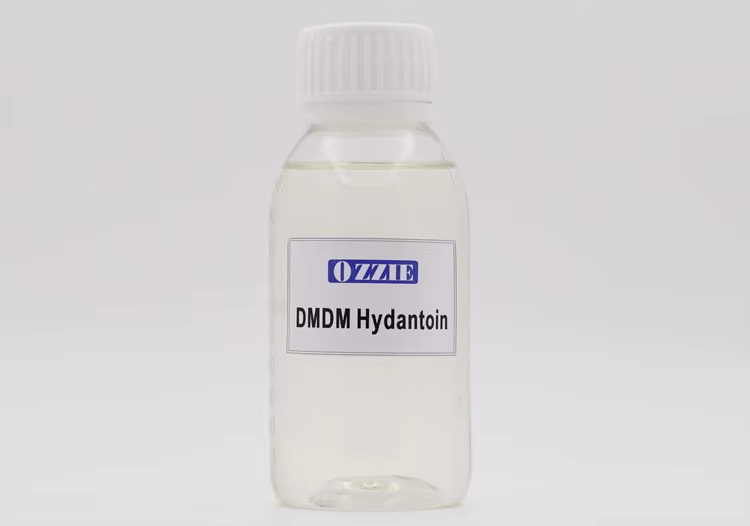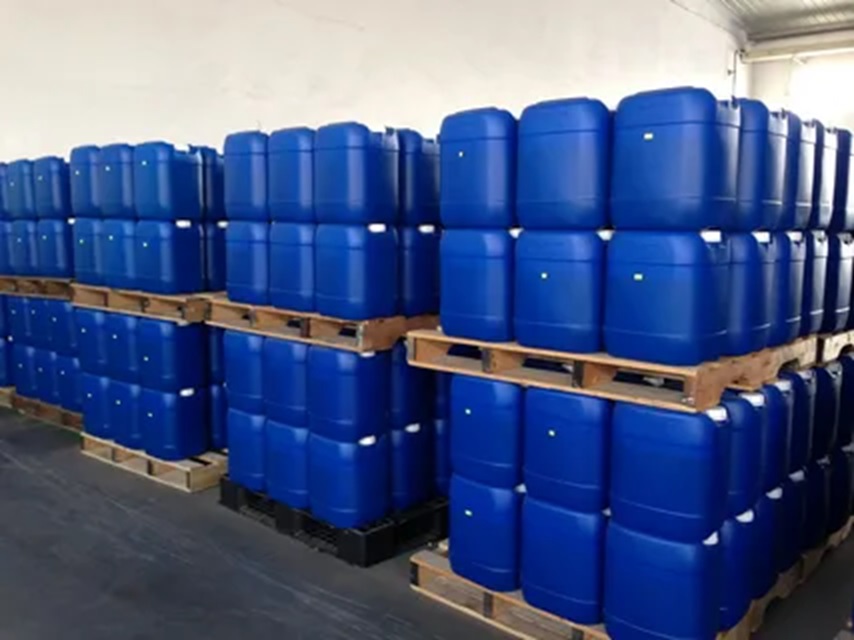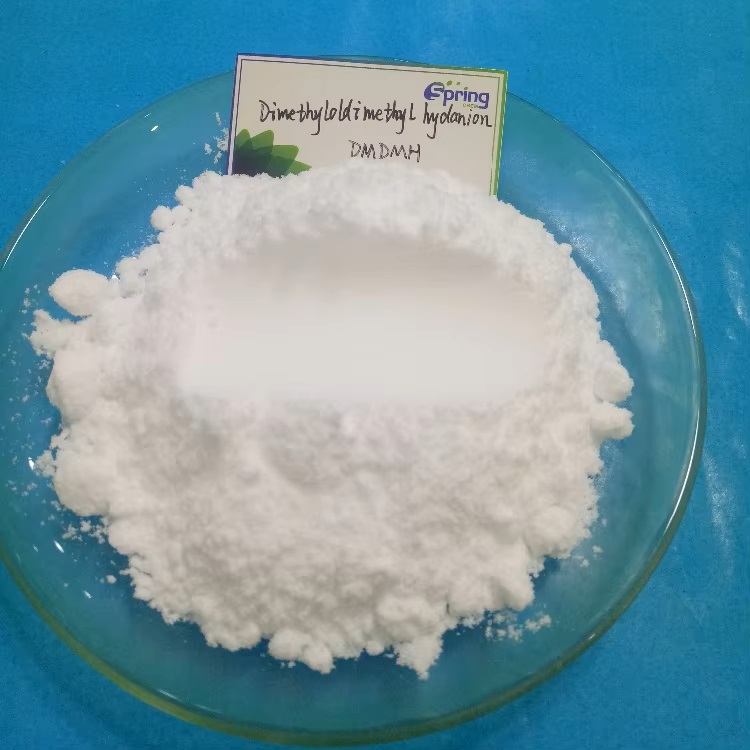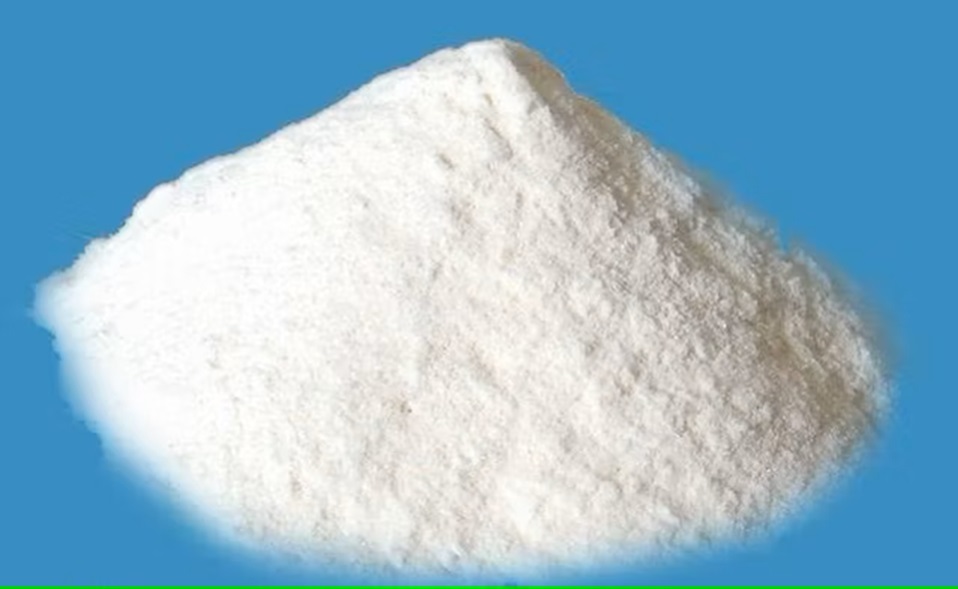We unleash your business potential by maximize the business innovation.
Send EmailDMDM HYDANTOIN, Mackgard DM, Dimethyloldimethyl Hydantoin, 6440-58-0, Dimethylol dimethyl hydantoin
| CAS Number | 6440-58-0 |
| Chem/IUPAC Name: | 1,3-Bis(hydroxymethyl)-5,5-dimethylimidazolidine-2,4-dione |
| EINECS/ELINCS No: | 229-222-8 |
| COSING REF No: | 33723 |

DMDM (dimethyl-dimethyl) hydantoin is an organic compound that is a member of the hydantoin family. It functions as an antimicrobial preservative by discharging formaldehyde. It is a broad-spectrum preservative that is effective against fungi, yeast, and gram-positive and gram-negative bacteria. It can be found in products like shampoos, hair conditioners, hair gels, and skin care products from the cosmetics industry.
What is DMDM HYDANTOIN used for?
DMDM hydantoin works as an antimicrobial in cosmetic and personal care products. It functions as an antibacterial agent and can aid in limiting the development of harmful bacteria, yeast, and fungi. It is a preservative that slows and prevents spoilage in items like shampoos and hair conditioners as well as in skin care items like moisturizers and foundations. It is a "formaldehyde donor," which means that over the course of a personal care product or cosmetic product's shelf life, it releases minute quantities of formaldehyde to function as a preservative and an antimicrobial.
DMDM Hydantoin is produced by reacting 3 to 5 moles of formaldehyde, as the 37% by weight aqueous solution, with 1 mole of dimethyl hydantoin at 84°C. A highly concentrated aqueous solution of the compound is prepared by reacting 2 moles of formaldehyde, as 37% formalin, with dimethyl hydantoin at 38 to 50°C, pH 8.1-8.3.
What does DMDM HYDANTOIN do in a formulation?
- Antimicrobial
- Preservative
Safety profile
The Cosmetic Ingredient Review (CIR) considers DMDM Hydantoin to be safe in the current usage levels of 0.074%. It has also been approved by the Cosmetics Directive of the European Union at a maximum concentration of 0.6%. According to the CIR safety review of this chemical, the skin does a poor job of absorbing DMDM Hydantoin. Oral exposure to DMDM Hydantoin did not have any negative effects in a laboratory study. The CIR Expert Panel noted that DMDM Hydantoin is an aqueous media formaldehyde donor. A few observations of skin irritation were made in clinical studies, and these observations may be related to the release of formaldehyde from DMDM Hydantoin. The CIR Expert Panel examined the safety of formaldehyde in cosmetics and personal care products and came to the conclusion that it was safe for the vast majority of consumers. However, it has restricted the concentration to 0.2% free formaldehyde due to some people's skin sensitivity to this agent. The amount of DMDM Hydantoin required to preserve a product (less than 1%) does not expose the consumer to concentrations of formaldehyde above the 0.2% limit for formaldehyde recommended by the CIR Expert Panel.
DMDM HYDANTOIN Alternatives: QUATERNIUM15, SODIUM BENZOATE
6440-58-0 DMDMH
1,3-bis(hydroxymethyl)-5,5-dimethylimidazolidine-2,4-dione
CAS: 6440-58-0
Molecular Formula: C7H12N2O4
Names and Identifiers
| Name | 1,3-bis(hydroxymethyl)-5,5-dimethylimidazolidine-2,4-dione |
| Synonyms | DMDMH Mackgard DM DMDM HYDANTOIN Nipaguard DMDMH Dimethyloldimethyl Hydantoin Dimethyloldimethyl hydantoin dimethylol-5,5-dimethylhydantoin 1,3-Dimethylol-5,5-dimethylhydantoin 1,3-dimethylol-5,5-dimethyl hydantoin Bis(hydroxymethyl)-5,5-dimethylhydantoin 1,3-Dihydroxymethyl-5,5-Dimethylhydantoin 1,3-DIHYDROXYLMETHYL-5,5-DIMETHYLHYDANTOIN 1,3-BIS(HYDROXYMETHYL)-5,5-DIMETHYLHYDANTOIN 1,3-bis(hydroxymethyl)-5,5-dimethyl Hydantoin bis(hydroxymethyl)-5,5-dimethyl-2,4-imidazolidinedione 1,3-Bis(hydroxymethyl)-5,5-dimethyl-2,4-imidazolidinedione 1,3-bis(hydroxymethyl)-5,5-dimethylimidazolidine-2,4-dione |
| CAS | 6440-58-0 |
| EINECS | 229-222-8 |
| InChI | InChI=1/C7H12N2O4/c1-7(2)5(12)8(3-10)6(13)9(7)4-11/h10-11H,3-4H2,1-2H3 |
Physico-chemical Properties
| Molecular Formula | C7H12N2O4 |
| Molar Mass | 188.18 |
| Density | 1.349±0.06 g/cm3(Predicted) |
| Melting Point | 1.00-2.5 °C |
| Boling Point | 303.7±52.0 °C(Predicted) |
| Flash Point | 137.5°C |
| Water Solubility | 140g/L at 20℃ |
| Solubility | DMSO (Sparingly), Methanol (Sparingly) |
| Vapor Presure | 0Pa at 25℃ |
| Appearance | Solid |
| Color | White to Off-White |
| pKa | 13.41±0.10(Predicted) |
| Storage Condition | Sealed in dry,Room Temperature |
| Stability | Unstable in DMSO solution |
| Refractive Index | 1.529 |
| Physical and Chemical Properties | Colorless transparent liquid, with a slight aldehyde flavor, in the ambient temperature below 15 ℃ when the precipitation of crystals, is a kind of formaldehyde release, soluble in water and alcohol, good heat resistance. |
| Use | For shampoo, hair conditioner, cosmetics as antiseptic |
Risk and Safety
| Risk Codes | R22 - Harmful if swallowed R36 - Irritating to the eyes R43 - May cause sensitization by skin contact |
| Safety Description | S26 - In case of contact with eyes, rinse immediately with plenty of water and seek medical advice. S36/37 - Wear suitable protective clothing and gloves. |
| HS Code | 29339900 |
Reference Information
| LogP | -2.9 at 20℃ |
| Use | 1,3 dimethylol -5,5 dimethylhydantoin, also known as DMDM hydantoin, English abbreviation DMDMH,DMDMH is a broad-spectrum, efficient antibacterial preservative, through the release of formaldehyde to resist Gram-positive bacteria, gram-negative bacteria, mold, yeast, etc., with a variety of emulsifiers, surfactants, good compatibility. Durable and renewable antimicrobial fabrics are prepared in a chemical finishing process by innovative chemical techniques using the precursor biocide dimethyloldimethylhydantoin (DMDMH). used in shampoo, hair conditioner, cosmetics as antiseptic shampoo, hair conditioner, cosmetic antiseptic. |
| Use range | in a wide range of pH value and temperature has been stable, DMDMH is not negative, cationic and nonionic surfactants are used in the recommended temperature range of pH = 3 to 10 and less than 60 °c. DMDMH is relatively mild, safe and non-toxic in use concentration, and has no irritation to skin and eye mucosa. MDMH has a wide range of applications, including industrial products such as liquid detergents, water-based surfactants, soft soaps, water-based coatings, fabric softeners, indoor deodorants, air fresheners, polymer emulsions, fabric protective coatings, architectural coatings, water-based gels, sealants and caulking adhesives, paper emulsion coatings, water-based inks, wood preservatives, etc. Can also include personal care products, a variety of high-grade skin care cosmetics, creams, wet towels, shampoos, gels, body wash, detergents and other daily chemicals antiseptic, dosage of 0.1% ~ 0.6%. Usually used in conjunction with the fungicide in order to achieve the desired effect of anti-corrosion and anti-mildew. The unique protection performance of the tank space makes it have special use value. The water-soluble product may be added directly. |
| preparation | A preparation method of antifreeze DMDM hydantoin, a 2L three-necked round bottom flask is equipped with a stirrer, temperature regulator. 7.4g of formaldehyde was placed in the flask and the pH was adjusted to with aqueous sodium hydroxide. 500g of hydantoin was added to the flask, a severe exotherm was observed, the temperature increased, and most of the hydantoin dissolved. The pH was adjusted to 8.3 with aqueous sodium hydroxide and the reaction mixture was stirred at 55 °c for a further 1 hour. 175g of water was added and then cooled to room temperature. 10.5g of NH4Cl was added and stirred evenly. The pH was adjusted to 7.0. The above product is an antifreeze DMDM hydantoin. |
| Application | broad-spectrum antibacterial, high activity, gram-positive bacteria, negative bacteria have a good inhibitory effect, it has a certain inhibitory effect on yeast and mold. It is widely used in shampoo, conditioner, cream, body wash and other liquid cosmetics. It is safe and effective for wash-off and resident products. |



